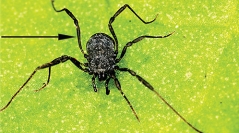

 European Journal of Taxonomy
777 (1) - Pages 1-67
European Journal of Taxonomy
777 (1) - Pages 1-67Nemastoma bidentatum Roewer, 1914 is a complex of closely related litter-dwelling harvestmen, characterized by a penis glans with two pairs of lateral lancet-like spines, and a femur IV with a saw-like series of pointed tubercles. Here we a) revise the hitherto known taxa within the N. bidentatum complex, and b) analyze in detail the relations among the taxa in Slovenia. The study revealed that the N. bidentatum complex consists of four species: N. bidentatum Roewer, 1914 s. str., N. relictum Gruber & Martens, 1968 stat. nov., N. pluridentatum (Hadži, 1973) stat. nov. and N. kozari Novak, Kozel, Podlesnik & Raspotnig sp. nov. Moreover, N. bidentatum s. str. consists of six subspecies: N. bidentatum bidentatum Roewer, 1914, N. bidentatum sparsum Gruber & Martens, 1968, N. bidentatum gruberi Novak, Slana Novak, Kozel & Raspotnig ssp. nov., N. bidentatum martensi Novak, Slana Novak & Raspotnig ssp. nov., N. bidentatum schmidti Novak, Raspotnig & Slana Novak ssp. nov. and N. bidentatum sneznikensis Novak, Komposch, Slana Novak & Raspotnig ssp. nov. In Slovenia, the six subspecies of N. bidentatum form a parapatric complex around N. bidentatum schmidti. Hybrids occur in the contact zones between adjacent subspecies, but they are missing between distant subspecies. The taxonomic distinction of lineages / subspecies is congruent with their distribution patterns. With six of the nine taxa present, Slovenia is considered the center of the N. bidentatum complex speciation. At the time being, this complex is the most diversified harvestman group on a subspecific and young-species level and provides important details on speciation processes in Opiliones.
Allopatric speciation, arachnids, Dyspnoi, morphological taxonomy, parapatric speciation